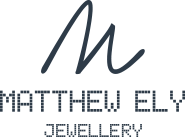Australian South Sea Pearls
If there was an “it” gem of 2023, it would have to be pearls. The epitome of elegance and refinement, Australian South Sea pearls from the Pinctada Maxima oyster are in a class of their own. Sourced by Autore from off the coast of Broome, These iridescent beauties have enchanted humanity for decades.
Learn More
A Guide to Buying Pearls
How can you tell if a pearl is real? Should you choose a Baroque pearl or round pearll? Discover tips from Matthew Ely and the Autore South Sea Cultured Pearl Classification Guide.
What are Keshi Pearls?
Named after the Japanese word for ‘poppy seed’, Keshis are “nature’s accidents”, formed as a by-product of the pearl culturing process. Find out more about this slightly edgy, effortless yet luxurious pearl style.
South Sea Pearl FAQs
What are South Sea Pearls?
South Sea pearls are a type of cultured pearl produced by oysters in the saltwater regions of the South Pacific, including areas such as Australia, Indonesia, the Philippines, and Myanmar.
They are among the largest pearls in the world, with diameters ranging from 9mm to over 20mm.
South Sea pearls are renowned for their exceptional lustre. They have a soft, natural glow that is often described as satiny or silky. This lustre is due to the thickness of their nacre and the specific species of oysters - the Pinctada maxima - that produce them.
What is nacre?
Nacre, also known as 'mother of pearl', is the iridescent and smooth substance that forms the layers of a pearl and gives them their unique beauty.
Nacre is created by molluscs, such as oysters and mussels, as a protective mechanism against irritants like sand grains or small parasites. Layer by layer, the mollusc secretes nacre to cover the irritant, resulting in the gradual formation of a pearl.
The quality and thickness of the nacre layers contribute significantly to a pearl's lustre, beauty, and overall value. Pearls with thick, smooth, and well-formed nacre layers tend to be more desirable.
Are South Sea Pearls cultured?
Yes, South Sea pearls are cultured pearls. They are produced through a process known as pearl cultivation, or pearl farming.
All Matthew Ely South Sea pearls are sourced directly from the Autore Group.
Autore's pearl farms are scattered across the crystal-clear waters off Australia and Indonesia, notably off the coast of Broome, WA. They are renowned from producing some of the most beautiful and lustrous South Sea pearls in the word, cultivated from the Pinctada maxima oyster.
Autore and Matthew Ely Jewellery are committed to sustainable pearl farming practices. This includes responsible management of oyster populations, careful monitoring of water quality, and minimising the environmental impact of operations.
How are South Sea pearls classified and graded?
All Matthew Ely Jewellery South Sea Pearls have been classified and graded according to Rosario Autore's South Sea Cultured Pearl Classification Guide.
This comprehensive pearl grading system evaluates each individual pearl according to the 'The Five S's' - Shine, Surface, Shade, Shape and Size.
Where are South Sea pearls found?
South Sea pearls are primarily found in the saltwater regions of the South Pacific Ocean. These pearls are produced by specific species of oysters, primarily the Pinctada maxima oyster.
Matthew Ely's South Sea Pearls are sourced directly from Autore, which has pearl farms off the coast of Broome, WA and Elizabeth Bay, NT, in addition to Lombok, Sumbawa and West Java.






























